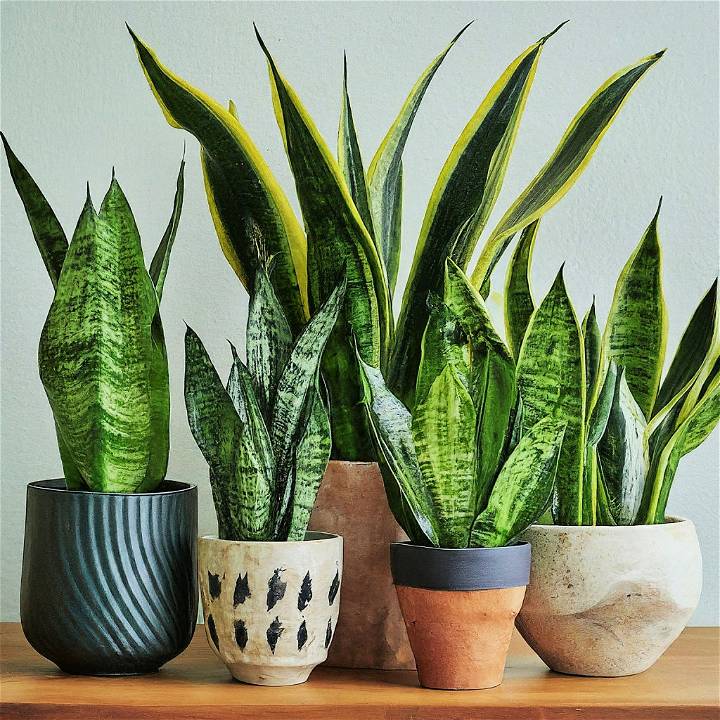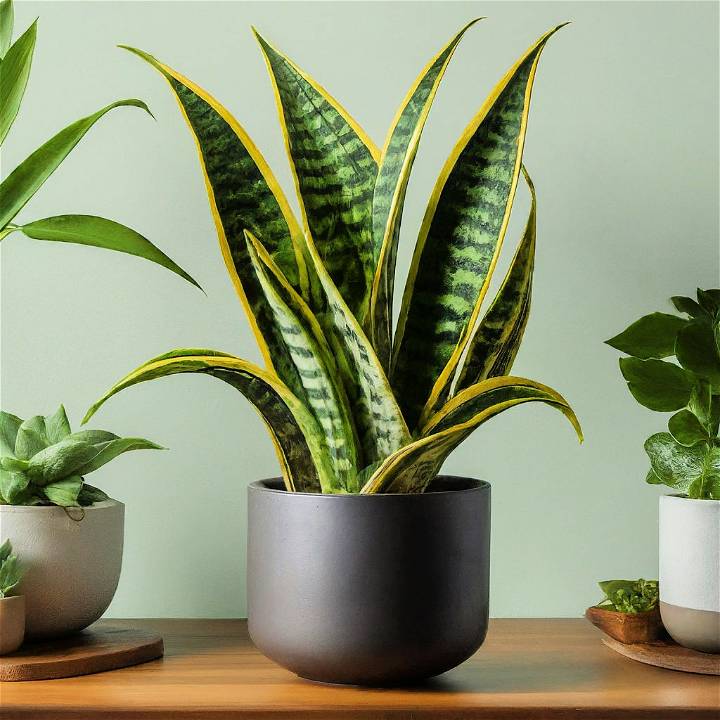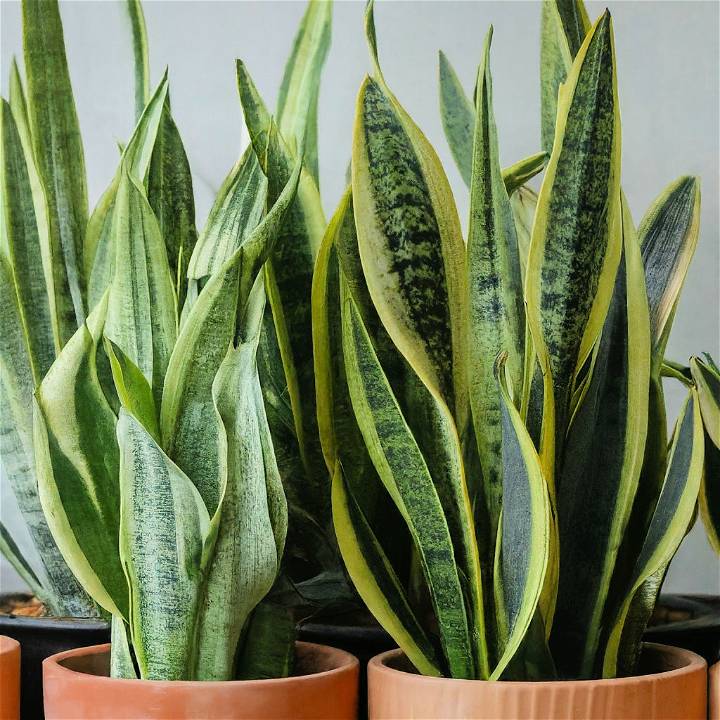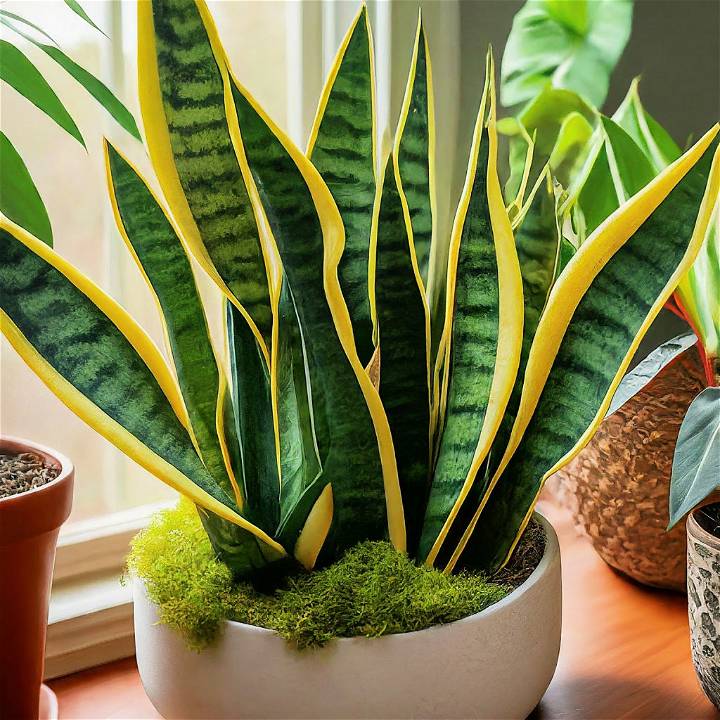Are you considering adding a touch of nature to your indoor space? Look no further than the Snake Plant. This resilient and versatile plant is a popular choice for many households due to its air-purifying qualities and low maintenance needs.
The Snake Plant, also known as Sansevieria, is a hardy plant that thrives in indoor environments with minimal sunlight. Its striking upright leaves add a touch of elegance to any room, making it a favorite among plant enthusiasts and beginners alike.
Not only does the Snake Plant enhance the aesthetics of your space, but it also serves as a natural air purifier. By absorbing toxins and releasing oxygen, this plant contributes to cleaner and fresher indoor air, promoting a healthier living environment for you and your loved ones.

Whether you're a seasoned plant parent or just starting your green journey, this step-by-step care and growing guide for the Snake Plant will equip you with the knowledge and confidence to nurture this resilient beauty in your home. Get ready to transform your space with the beauty and benefits of the Snake Plant.
Understanding Snake Plants
Snake plants, also known as Sansevieria, are popular indoor plants that offer various benefits, making them a favorite choice among plant enthusiasts. Here's a look at why understanding snake plants can enhance your indoor gardening experience.
Benefits of Snake Plants
Snake plants offer a range of advantages that make them a valuable addition to any indoor space. One of the most prominent benefits is their air-purifying properties. According to Healthline, snake plants can filter indoor air pollutants, making them ideal for improving air quality. These plants excel at removing toxins like formaldehyde and benzene, creating a healthier living environment. What's more, snake plants continue their air-purifying function even at night, ensuring 24/7 air quality enhancement.
Apart from their air-purifying abilities, snake plants are also known to boost mental health. The presence of these lush green plants can have a soothing and calming effect on individuals, contributing to stress reduction and overall well-being. Their low maintenance nature and adaptability to various light conditions further add to their appeal as indoor companions. With snake plants, you can enjoy cleaner air and a touch of nature in any room of your home.
Types of Snake Plants
When exploring snake plants, you'll encounter a variety of species and cultivars that showcase different characteristics. The Dracaena trifasciata, commonly known as the mother-in-law's tongue or snake plant, is one of the most popular varieties. This type of snake plant features tall, sturdy leaves with distinctive patterns and requires minimal care, making it perfect for beginners.
In addition to the Dracaena trifasciata, snake plants come in various leaf patterns and sizes. Some species exhibit bold, vertical stripes on their leaves, while others display intricate, mottled patterns. The diversity in leaf aesthetics allows you to choose a snake plant that complements your interior decor and personal style. Whether you prefer a compact size for a small space or a statement plant with striking foliage, there's a snake plant variety to suit every preference.
By acquainting yourself with the benefits and types of snake plants, you can cultivate a deeper appreciation for these versatile and beneficial indoor plants. Incorporating snake plants into your indoor garden not only enhances the aesthetic appeal of your home but also contributes to a healthier and more inviting living environment.
Snake Plant Care Guide
Caring for your snake plant involves understanding its specific needs to ensure it thrives and flourishes in your home environment. Below are essential guidelines to help you provide the best care for your snake plant.

Light and Placement
Snake plants thrive in indirect sunlight, requiring approximately 8 to 10 hours of indirect light daily. You can also provide them with a few hours of early-morning direct sunlight. Placing your snake plant near a window with sheer curtains or in a well-lit room will ensure it receives the ideal amount of light for optimal growth. Ensure to rotate the plant occasionally to promote even growth.
Watering Schedule
It's crucial to let the soil of your snake plant dry out between waterings to prevent overwatering and root rot. Water your snake plant sparingly, ensuring the soil dries out completely before the next watering session. Typically, watering every 2-6 weeks, depending on environmental humidity, will suffice. Always allow excess water to drain out of the pot to avoid waterlogging.
Soil Requirements
Snake plants thrive in well-draining potting mix to prevent water retention that can lead to root rot. A mixture of peat moss, perlite, and coarse sand provides the ideal drainage for snake plants. Repot your snake plant as needed, typically every 2-3 years, to refresh the soil and provide more space for growth.
Temperature and Humidity
Snake plants prefer temperatures ranging from 60-80°F (15-27°C), making them well-suited for typical indoor environments. Avoid exposing your snake plant to extreme cold drafts or sudden temperature fluctuations, as they can stress the plant. Maintain moderate indoor humidity levels, around 40-50%, to ensure your snake plant remains healthy and vibrant.
Propagation Techniques
You can propagate snake plants through various methods, such as division, leaf cuttings, or rhizome division. To propagate through division, carefully separate the plant into smaller sections, ensuring each has roots attached. Leaf cuttings involve cutting a healthy leaf into sections and planting them in moist soil to encourage new growth. Rhizome division includes separating the plant's underground stems to create new plantlets. Experiment with different propagation methods to find what works best for your snake plant.
By following these care guidelines, you can cultivate a thriving and lush snake plant that brings beauty and greenery into your living space. Remember to monitor your plant's growth and adjust care routines as needed to promote its well-being.
Common Issues and Troubleshooting
Taking care of your snake plant involves being vigilant for common issues that may arise. It's crucial to know how to address these problems promptly to ensure your snake plant stays healthy and vibrant.

Dealing with Overwatering
Overwatering is a common issue that can negatively impact the health of your snake plant. To recognize signs of overwatering, look out for yellowing leaves, mushy stems, or soil that remains wet for an extended period. If you suspect overwatering, allow the soil to dry out completely before watering again. Ensure your snake plant is in a well-draining pot and adjust your watering schedule to prevent future water-related problems. Remember, it's better to underwater than overwater a snake plant.
Pest Management
Pests such as spider mites or mealybugs can threaten the well-being of your snake plant. Keep an eye out for webs, sticky residue, or tiny insects on the leaves. To combat these pests organically, you can use a solution of mild dish soap and water to gently wash the leaves. Alternatively, neem oil spray is effective in controlling infestations. Regularly inspect your plant and quarantine any affected ones to prevent the spread of pests.
Leaf Care and Maintenance
Proper leaf care is essential for the overall health and appearance of your snake plant. Dust can accumulate on the leaves, hindering photosynthesis. To keep your plant looking its best, gently wipe the leaves with a damp cloth to remove dust. Additionally, trim any yellowing or damaged leaves to promote new growth. Maintaining clean, healthy leaves will not only enhance the aesthetic appeal of your snake plant but also contribute to its well-being.
Taking proactive steps to address common issues such as overwatering, pests, and leaf care will help your snake plant thrive. By staying observant and implementing preventative measures, you can enjoy a beautiful and resilient snake plant in your indoor space.
Enhancing Growth and Aesthetics
Snake plants are not just resilient and easy to care for; they also have the potential to grow vibrantly and enhance the aesthetics of your living space. By incorporating the following tips, you can ensure that your snake plant thrives and becomes a stunning addition to your home.
Fertilizing Tips
Fertilizing your snake plant is essential to support its growth and maintain its lush foliage. Opt for a balanced liquid fertilizer with an N-P-K ratio of 10-10-10 or 20-20-20 to provide the necessary nutrients. During the growing season in spring and summer, feed your snake plant once a month to promote robust growth. However, reduce the frequency to every 6-8 weeks during the fall and winter when the plant is dormant. Over-fertilizing can be harmful, so always dilute the fertilizer to half the recommended strength to prevent damage to the roots.
Creative Display Ideas
Elevate the visual appeal of your snake plant by showcasing it in creative and innovative ways within your home. Consider placing your snake plant in decorative pots that complement your interior decor style. Experiment with different pot shapes, colors, and materials to add a personal touch. Utilizing plant stands can also elevate your snake plant to eye level, making it a focal point in any room. Moreover, incorporating snake plants into your interior design schemes, such as minimalist or bohemian styles, can infuse a natural and refreshing element into your living space.

Enhancing the growth and aesthetics of your snake plant not only benefits the plant's health but also adds a touch of greenery and style to your home decor. By following these fertilizing tips and exploring creative display ideas, you can transform your snake plant into a centerpiece that brightens up your living environment.
Conclusion
In conclusion, caring for your snake plant is a rewarding and fulfilling experience. Remember to provide your snake plant with indirect sunlight for about 8 to 10 hours a day, ensuring it thrives without being scorched by direct sun. Allow the soil to dry out between waterings, typically every 2 to 6 weeks, depending on your home's humidity levels.
Regularly wiping the leaves of your snake plant keeps them free from dust, allowing them to absorb more light efficiently. Additionally, feeding your snake plant once a month from April to September with a balanced liquid fertilizer will promote healthy growth and vibrant foliage.
By following these simple steps and tips outlined in the snake plant care guide, you can enjoy the numerous benefits of having this diehard houseplant in your home. So go ahead, implement these strategies, and watch your snake plant flourish into a beautiful and thriving addition to your indoor oasis.

